I'm creating a preprocessing in opencv python that computes the total area, infected region and percentage of region interest.
import cv2
import numpy as np
import argparse
img1 = cv2.imread('19.jpg')
img = cv2.resize(img1, (0,0), fx=0.5, fy=0.5)
original = img.copy()
neworiginal = img.copy()
blur1 = cv2.GaussianBlur(img,(3,3),1)
newimg = np.zeros((img.shape[0], img.shape[1],3),np.uint8)
criteria = (cv2.TERM_CRITERIA_EPS + cv2.TERM_CRITERIA_MAX_ITER , 10 ,1.0)
img = cv2.pyrMeanShiftFiltering(blur1, 20, 30, newimg, 0, criteria)
blur = cv2.GaussianBlur(img,(11,11),1)
kernel = np.ones((5,5),np.uint8)
canny = cv2.Canny(blur, 200, 290)
res = cv2.morphologyEx(canny,cv2.MORPH_CLOSE, kernel)
canny = cv2.cvtColor(canny,cv2.COLOR_GRAY2BGR)
cv2.imshow('Canny',res)
hsv = cv2.cvtColor(img, cv2.COLOR_BGR2HSV)
lower = np.array([5,25,25])
upper = np.array([70,255,255])
mask = cv2.inRange(hsv, lower, upper)
res = cv2.bitwise_and(hsv,hsv, mask= mask)
gray = cv2.cvtColor(res,cv2.COLOR_BGR2GRAY)
ret, thresh = cv2.threshold(gray,0,255,cv2.THRESH_BINARY+cv2.THRESH_OTSU)
_, contours, hierarchy = cv2.findContours(thresh,cv2.RETR_TREE,cv2.CHAIN_APPROX_NONE)
for i in contours:
cnt = cv2.contourArea(i)
#M = cv2.momens(i)
#cx = int(M['m10']/M['m00'])
if cnt > 1000:
cv2.drawContours(img, [i], 0, (0,0,255), 2)
gray = cv2.cvtColor(img,cv2.COLOR_BGR2GRAY)
ret, thresh = cv2.threshold(gray,0,255,cv2.THRESH_BINARY+cv2.THRESH_OTSU)
_, contours, hierarchy = cv2.findContours(thresh,cv2.RETR_TREE,cv2.CHAIN_APPROX_NONE)
cnt = max(contours, key=cv2.contourArea)
Tarea = cv2.contourArea(cnt)
cv2.imshow('img', img)
height, width, _ = canny.shape
min_x, min_y = width, height
max_x = max_y = 0
frame = canny.copy()
for contour, hier in zip(contours, hierarchy):
(x,y,w,h) = cv2.boundingRect(contour)
min_x, max_x = min(x, min_x), max(x+w, max_x)
min_y, max_y = min(y, min_y), max(y+h, max_y)
if w > 80 and h > 80:
cv2.rectangle(frame, (x,y), (x+w,y+h), (255, 0, 0), 2)
roi = img[y:y+h , x:x+w]
originalroi = original[y:y+h , x:x+w]
if max_x - min_x > 0 and max_y - min_y > 0:
cv2.rectangle(frame, (min_x, min_y), (max_x, max_y), (255, 0, 0), 2)
img = roi
imghls = cv2.cvtColor(roi, cv2.COLOR_BGR2HSV)
imghls[np.where((imghls==[30,200,2]).all(axis=2))] = [0,200,0]
huehls = imghls[:,:,0]
huehls[np.where(huehls==[0])] = [35]
#Thresholding on hue image
ret, thresh = cv2.threshold(huehls,28,255,cv2.THRESH_BINARY_INV)
cv2.imshow('thresh', thresh)
mask = cv2.bitwise_and(originalroi,originalroi,mask = thresh)
_, contours,heirarchy = cv2.findContours(thresh, cv2.RETR_TREE, cv2.CHAIN_APPROX_NONE)
Infarea = 0
for x in range(len(contours)):
cv2.drawContours(originalroi,contours[x],-1,(0,0,255),2)
cv2.imshow('Contour masked',originalroi)
#Calculating area of infected region
Infarea += cv2.contourArea(contours[x])
#if Infarea > Tarea:
#Tarea = img.shape[0]*img.shape[1]
print ('_______________________\n| Total area: ' + str(Tarea) + ' |\n|_____________________|')
#Finding the percentage of infection in the banana
print ('\n__________________________\n| Infected area: ' + str(Infarea) + ' |\n|________________________|')
try:
per = 100 * Infarea/Tarea
except ZeroDivisionError:
per = 0
print( '\n_________________________________________________\n| Percentage of infection region: ' + str(per) + ' |\n|_______________________________________________|')
cv2.imshow('orig',original)

Here's the image I've used in this particular code my problem is in getting the region of interest its not accurate result if we see in our own vision the infected area must be in 50% I think. Any idea how to get the best accuracy percentage of region interest because the result is not accurate as well.


